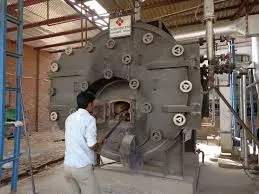
Sep . 16, 2024 07:31 Back to list
boiler steam price
The Importance of Boiler Steam Pricing in Industrial Operations
In today's industrial landscape, steam plays a crucial role in various processes, from manufacturing to heating. Boilers, which generate steam, are essential components in many businesses, providing the necessary heat and energy for operations. However, the cost of boiler steam, often referred to as boiler steam price, significantly affects the overall operational expenses. Understanding the factors that influence this pricing and its implications can help companies make informed decisions.
Boiler steam price is influenced by several factors, including the type of fuel used, the efficiency of the boiler, and market demand. The two most common fuels for boilers are natural gas and oil, each with fluctuating prices based on global market conditions. As oil prices rise due to geopolitical tensions or supply chain disruptions, the cost of boiler operation can increase correspondingly. Similarly, natural gas prices are often subject to seasonal variations and market speculation, affecting the overall steam price.
Another critical factor is the efficiency of the boiler itself. Modern boilers are designed to operate more efficiently, converting a higher percentage of fuel into usable steam. Older models, in contrast, can result in higher operational costs due to energy wastage. Investing in energy-efficient boilers may entail a higher initial capital expenditure but can lead to significant savings over time due to reduced fuel consumption and lower steam prices.
boiler steam price

Market demand also plays a critical role in boiler steam pricing. Industries that rely heavily on steam, such as food processing, textiles, and chemical manufacturing, may experience increased demand during certain periods, driving up costs. For example, during peak production seasons, companies seeking steam might find themselves paying higher prices due to increased competition for limited resources. Conversely, in times of economic downturn, reduced production needs can lead to lower steam prices.
The carbon footprint associated with steam production is another emerging consideration. As organizations strive to meet sustainability targets, the demand for greener alternatives in steam generation is rising. This push for cleaner energy sources, such as biomass or electric boilers, may eventually affect traditional boiler steam prices. While these alternatives can come with higher initial costs, they often align with long-term savings, including lower fuel costs and potential tax incentives.
For businesses, understanding and managing boiler steam pricing is not only about reducing costs but also about ensuring operational reliability and sustainability. Companies should conduct regular audits of their steam usage and boiler efficiency to identify areas for improvement. This proactive approach can help mitigate the impact of rising steam prices and enhance overall productivity.
In conclusion, boiler steam price is a significant factor influencing industrial operations. By considering various factors such as fuel type, boiler efficiency, market demands, and sustainability initiatives, businesses can navigate the complexities of steam pricing. Ultimately, leveraging this understanding will allow companies to make informed decisions that optimize operational efficiency and cost-effectiveness, enabling them to thrive in an increasingly competitive market.
-
High-Efficiency Commercial Oil Fired Steam Boiler for Industry
NewsJul.30,2025
-
High-Efficiency Biomass Fired Thermal Oil Boiler Solutions
NewsJul.30,2025
-
High Efficiency Gas Fired Thermal Oil Boiler for Industrial Heating
NewsJul.29,2025
-
High-Efficiency Gas Fired Hot Water Boiler for Sale – Reliable & Affordable
NewsJul.29,2025
-
High Efficiency Biomass Fired Hot Water Boiler for Industrial and Commercial Use
NewsJul.29,2025
-
High-Efficiency Biomass Fired Hot Water Boiler for Industrial Use
NewsJul.28,2025
Related PRODUCTS






















